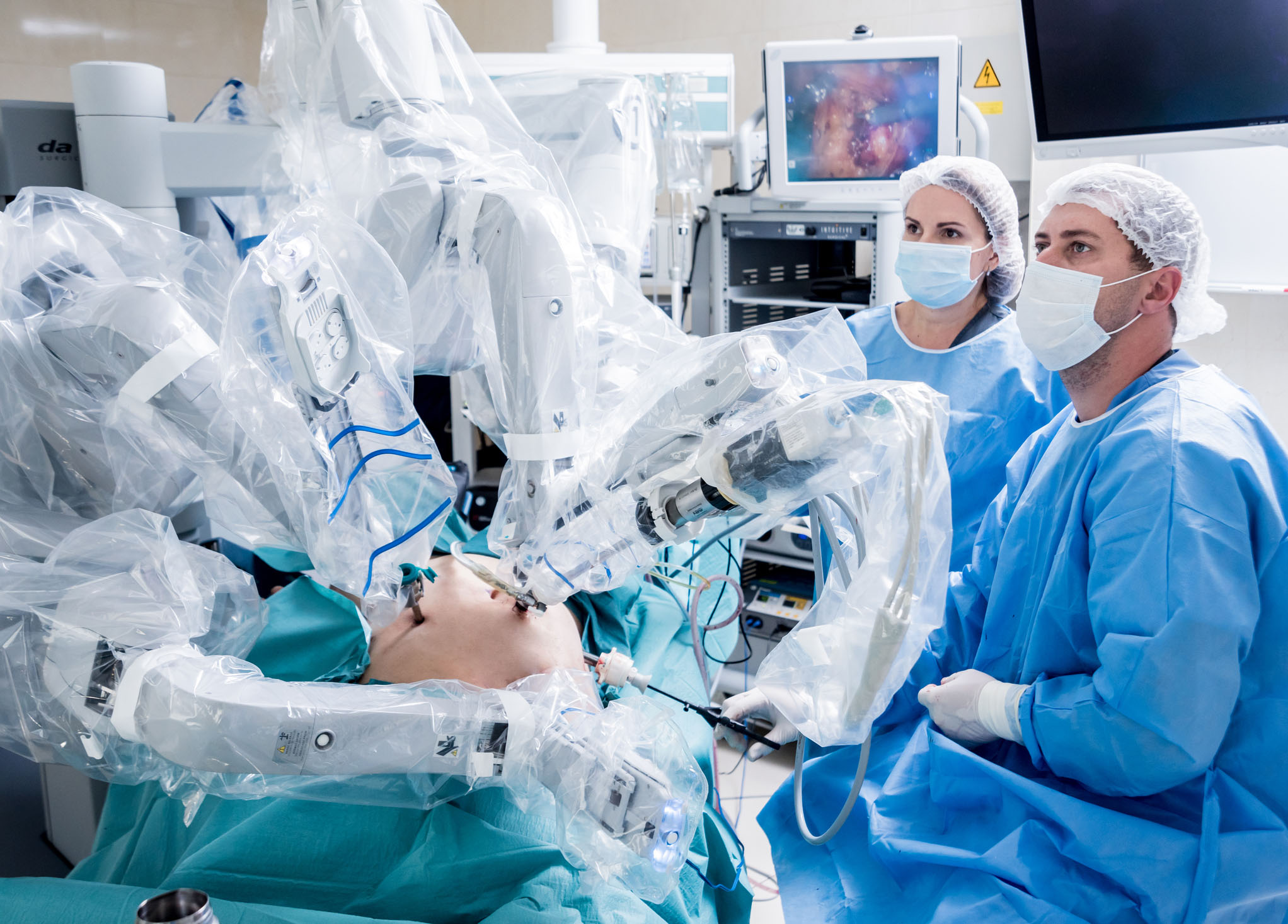
Digital Surgery


Digital Surgery
Hospitals can no longer adhere to a rigorous architectural plan for operating suites due to the rapid rate of technological innovation in surgery. Operational Rooms (ORs) must be sized and outfitted suitably to support a wide range of current and future technologies, as well as configured to represent an institution's general and specialized demands. They must also be able to easily adjust to modifications in treatment paradigms and service line strategy. Medical device businesses must radically restructure their business models to remain successful in the market, shifting their focus away from physical capital medical devices and toward digital solutions that surround those physical devices.
The development of the "digital operating room," which strives to combine the images, information, and work flow available in the hospital and operating center, is aided by these next-generation equipment. This type of integration can both distribute and record data while also providing intelligence.
Smart operating room components are also required to allow surgeons to perform surgical procedures efficiently and successfully. Dealing with product differentiation is the main difficulty for contemporary market competitors. Furthermore, innovations and adoptions are occurring at a faster rate than in the past. A simple data management tool when integrated well with the existing infrastructure provides extremely useful and intelligent data.
The concept of a computerized operating room is extremely fluid. Given how quickly digital operating rooms are being integrated into hospitals, clinical confirmation of increased surgical quality is limited. The proven and expected use of image distribution in one OR (routing and switching) or outside the OR (broadcasting), information integration, image and video registration, and intelligence are examined from the standpoint of surgical quality and safety. The digital operating room is supposed to help with learning and teaching as well as surgical quality. The advent of augmented or artificial intelligence (AI) in particular will be a significant step forward.
Transformed Surgical Spaces
Advances in surgical technique and technology have placed enormous demands on today's operating room's space and capacity in recent years. As a result, as outpatient surgery, minimally invasive procedures, and technology innovation drive improvements in OR design, hospitals are rapidly replacing outdated surgical facilities with new operating suites.
As more technologies make their way into the operating room, they compete with employees and basic fixtures for space around the operating table. The majority of technologies can be accommodated in an appropriate OR size with plenty of area for staff circulation. Preparing OR ceiling spaces with clean tiles and extra boom mounts allows for quick conversion to multiple specialist layouts without costly renovations, anticipating probable changes in surgical offers. Hospitals looking for more flexibility in the operating room on a day-to-day basis are experimenting with "universal" designs to ensure surgeon and crew comfort in any operating room. Additional electrical capacity is being added to new and rebuilt ORs to allow for optimum flexibility in accommodating future technology. It is vital to work with vendors early in the construction process to ensure seamless integration of OR technology and to secure no-cost upgrades to avoid obsolescence. Although universal operating rooms are excellent in many situations, not all surgical specialties fit the one-room pattern. Given the high cost of specialized suites, customized ORs should be considered only for those service lines and technologies that are likely to benefit from dedicated spaces, such as cardiac, neurosurgery, ortho/spine, and endovascular minimally invasive and robotic surgery, as the complexity of each hospital's surgical processes and departments may dictate an entirely different OR configuration.
The majority of today's hospitals were designed with inpatients in mind, but they are now proving inadequate to satisfy the demands of today's outpatient market. Hospitals are under unprecedented pressure to rearrange their inpatient and outpatient surgery facilities in response to rising service expectations and recuperation requirements. Several hospitals are investing in ambulatory surgery centers (ASCs) in order to alleviate capacity limitations and retain outpatient revenue. Surgeons are attracted to hospital outpatient surgery centers because of the promise of increased efficiency, while patients appreciate the ASC amenities, which give a degree of comfort and service considerably above that of a regular (inpatient) hospital experience. Many hospitals are learning that the efficiency promises and significant technology upgrades of a distant ASC location are sometimes insufficient to change surgeon practice patterns. To secure surgeon buy-in and avoid OR underutilization, collaboration on ASC strategy and location is critical. Designating ORs within the standard surgical suite particularly for outpatient services is an enticing option for hospitals looking to cater to the outpatient market while ensuring convenience and efficiency for surgeons. As demand fluctuates, hospitals can use dedicated outpatient ORs for specific types of inpatient situations by combining inpatient and outpatient ORs under one roof.
